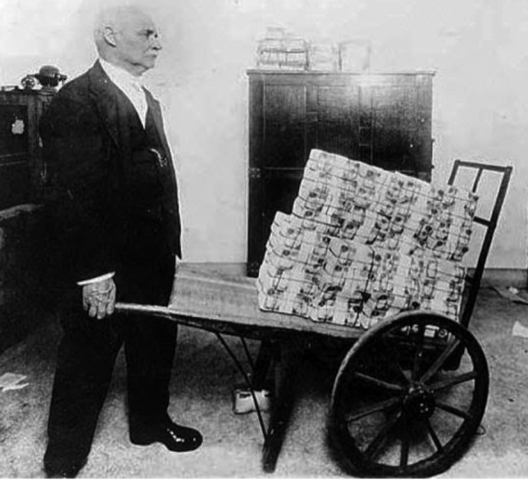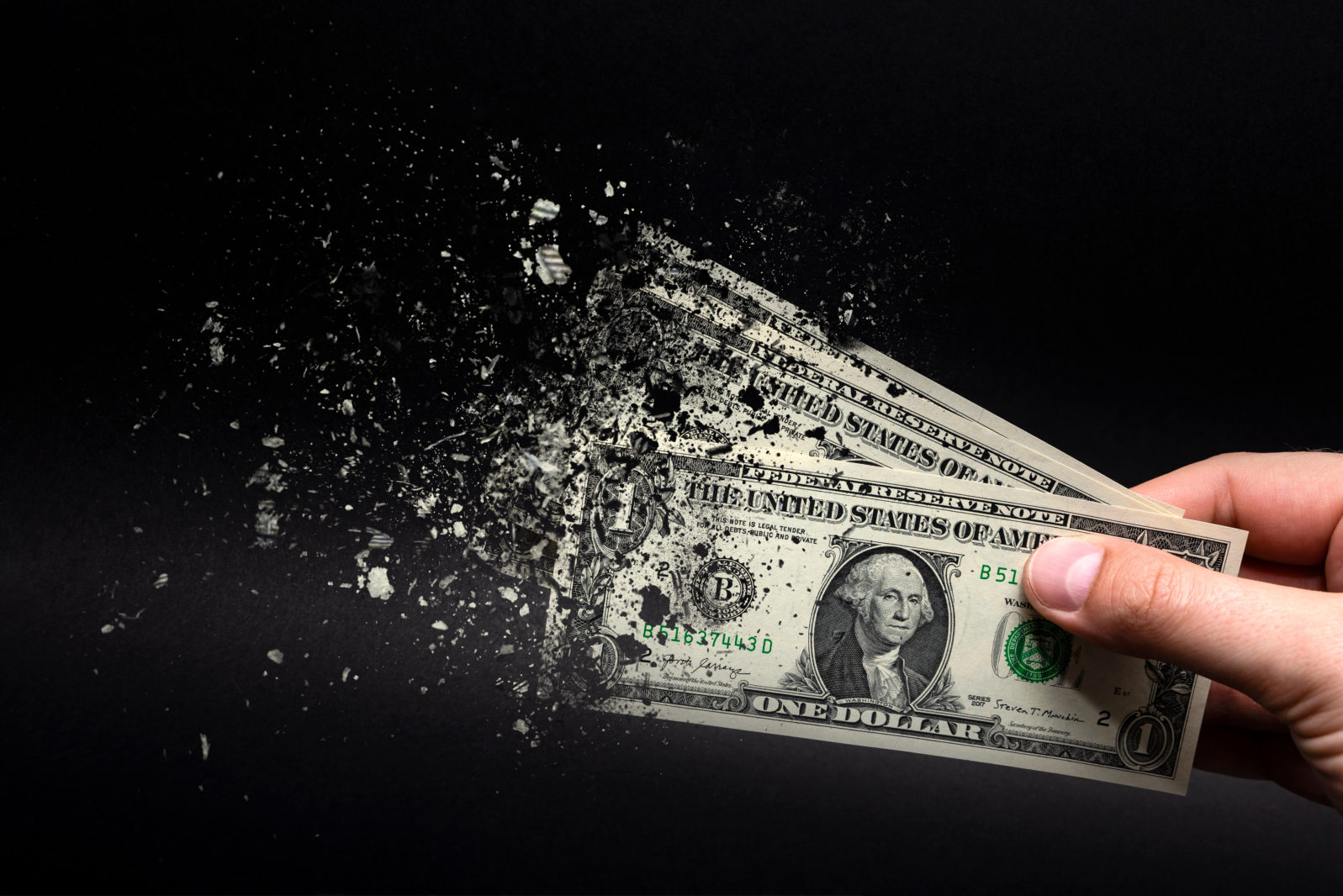Will Higher Prices Disarm Russia? It’s Complicated…
The effects of hyperinflation are subtle, but very realThe annual rate of consumer price inflation in Russia was 9% in February and 17% in March. For producer prices, the March number was 27%. Is Russia headed for hyperinflation, with prices increasing at triple-digit rates or more? I don’t know, but it is worth remembering what happens during hyperinflations.
Many people believe that higher prices make everyone worse off. This is not true. Buyers pay more, but sellers receive more. One person’s higher price is another’s higher income. If all prices and incomes were to increase by the same amount — say 10 percent — everyone’s real, inflation-adjusted income would be unchanged. The true costs of inflation are more subtle.
In practice, within every inflation, some prices increase more than others. Some people gain while others lose. The most recent big inflation in the United States was in the 1970s. In 1973, the consumer price index rose 9 percent while farm income increased 31 percent — transferring income to farmers from the rest of the nation. The tremendous increase in oil prices in 1973–1974 and 1979–1980 transferred hundreds of billions of dollars out of the United States to oil-exporting nations. Most of the complaints about inflation were misdirected. The pain many felt was not due to inflation, but to relative price shifts in favor of farmers and oil owners who had no reason to complain.
Inflation also reduces the real value of debts, a depreciation that benefits debtors and hurts creditors. When there was inflation during the Civil War, William McCormick wrote to his brother in England that “creditors were seen running away from their debtors and their debtors pursued them in triumph and paid them without mercy.” When William Jennings Bryan campaigned for President in 1896, he promised an inflation that would make it easier for farmers to pay off their mortgages. In the 1930s, Franklin Roosevelt pledged inflation for similar reasons. In a radio speech that was printed on the front page of the New York Times the next day, he argued that the recent drop in prices should be reversed:
I repeat what I have said on many occasions, that ever since last March the definite policy of the government has been to restore commodity price-levels… to make possible the payment of public and private debts more nearly at the price-level at which they were incurred.
FDR was a shrewd and successful politician promising inflation!
Inflation has another, even more subtle, cost. When prices are increasing rapidly, the hot-potato that you don’t want to be caught holding is money. You don’t want cash tucked under a mattress, buried in the back yard, or sitting idly in a checking account paying little or no interest. You want to buy things like coffee, tomatoes, and toothpaste before their prices go even higher (a rush to buy that pushes prices up even faster). Any leftover funds can be invested temporarily in appreciating assets and then withdrawn when needed.
When the United States experienced double-digit inflation and double-digit interest rates in the late 1970s, many people spent many hours trying to minimize the minutes they spent holding idle cash, either at home, at their businesses, or in their checking accounts. Before the internet, they made daily trips to banks, shuffling funds back and forth between savings accounts that paid interest and checking accounts that did not. Business put billions of dollars into overnight and even hourly loans.
People spending their valuable time and energy trying to minimize their cash holdings is a very real social cost that economists call the “shoe-leather cost” of inflation.
During hyperinflations, the shoe-leather costs become absurd. A good example is the German hyperinflation in 1922– 1923. After World War I, the victorious Allies demanded large reparation payments from Germany. In January 1923, French and Belgian troops occupied the Ruhr district, claiming that Germany was behind in its payments. The German government called a general strike and printed hundreds of billions of marks to pay the strikers. The rate of inflation reached 322 percent a month!
Germans who were still working were paid several times a day. Their children would bike to the factory gates to collect these wages and then peddle furiously back to town to spend the money as quickly as possible. Businesspeople traveling through Germany had to borrow money from their customers to get to the next city. Bankers spent their days monitoring exchange rates for businesses that were importing and exporting goods.

To foreign observers, such antics were a source of amusing stories that sounded like jokes, but were all too real. The New York Times reported that an American dining at a Berlin restaurant asked for all the dinner that a U.S. dollar would buy. He received a satisfying meal, but, as he was about to leave, the waiter appeared with another soup and entree, explaining, “The dollar has gone up again.” Others told of buying beer and receiving more for returning the empty bottle than they had paid for it full.
The Associated Press sent out this satirical report:
“Zero stroke” or “cipher stroke” is the name created by German physicians for a prevalent nervous malady brought about by the present fantastic currency figures. Scores of cases of the “stroke” are reported among men and women of all classes, who have been prostrated by their efforts to figure in thousands of billions. Many of these persons apparently are normal, except for a desire to write endless rows of [zeros].
In late 1923, Germany’s hyperinflation ended with dramatic suddenness. The old currency, reichsmarks, was replaced by rentenmarks. One rentenmark was worth a trillion reichsmarks. The government announced that rentenmarks were sound money, backed by first mortgages on the land and other physical assets of the Reich. This was a meaningless public-relations ploy but the reparations and strike payments stopped and so did the government’s money-printing presses.
Russian workers have long had a popular saying that summarizes the inefficiencies of the communist system: “They pretend to pay us and we pretend to work.” If, on top of this charade, output in Russia drops by double digits and the rate of inflation reaches triple digits, Russians are going to become even more cynical and, I hope, disillusioned.
You may also wish to read: In It For the Money: The Trump Coin Sham Beware deceitful memorabilia hawkers who sell cheap mementos, hoping you’ll be the fool that helps make them rich. The problem with “investing” in collectibles is that mementos don’t have intrinsic value in the same way stocks, bonds, properties, and businesses do. (Gary Smith)
